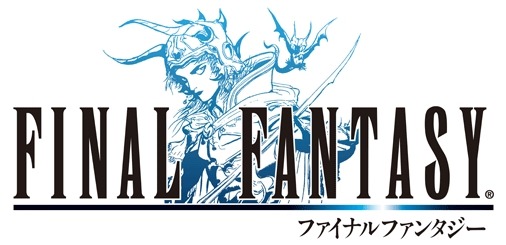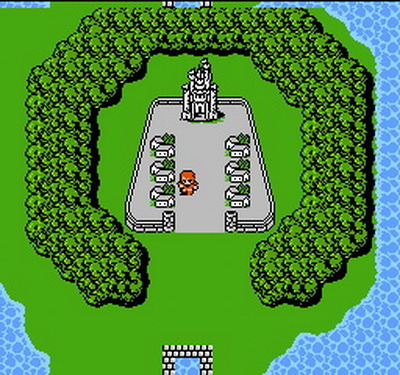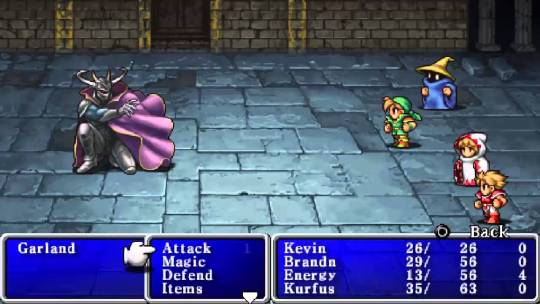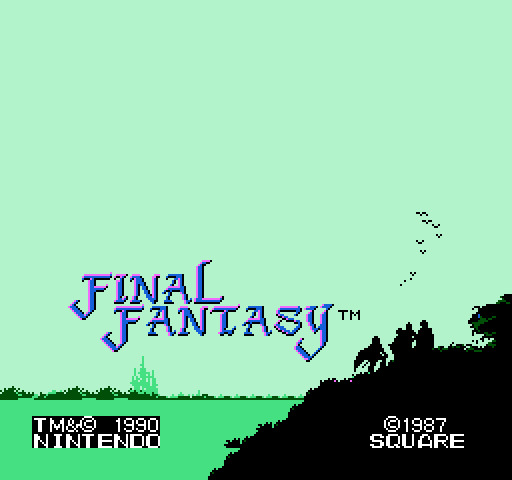#it has nothing to do with the fact that ive liked mage warrior ships for the past 5 years. shut up
Explore tagged Tumblr posts
Text





u know im back on my bullshit
#octopath traveler ii#octopath traveler 2#satsuhart#temehika#hikari ku#temenos mistral#i thought long and hard about whether temenos is a catboy or a dogboy (hound)#and in the end i decided on arctic fox.#i have.... thoughts but theyre all spoilery thoughts like no literally no one can talk about why they like them without mentioning spoilers#ive been seeing it happen on twt for like the past 2 weeks#but anyway (spoiler) (spoiler) just trust me dude. theyre a good ship#it has nothing to do with the fact that ive liked mage warrior ships for the past 5 years. shut up#also i bought csp v2 and the shading assist... she popped off a little w that one ngl#but im still very angry about csp's terrible autosave function#like fun fact that first pic? i dont have it in .clip format anymore LOL#it also deleted the little pic i made about my ship taste but i didnt know and i deleted that tweet bc i was embarrassed#i mean it isnt a big loss i can remake it anytime but like. shaking fist at csp autosave function#tags are really quite dangerous im not even sure if theres a limit? ill stop here tho gn... i am working on a temehika fic 👍#octo2
183 notes
·
View notes
Text
Final Fantasy Review

Year: 1987 Original Platform: Famicom Also available on: Nintendo (NES), GameBoy Advance (Final Fantasy I & II: Dawn of Souls), PlayStation One (Final Fantasy Origins), PSP (Anniversary Edition) Version I played: PSP
Synopsis:
The world is in danger. Four monstrous fiends, each corresponding to an element of nature, have wreaked havoc on the world, causing each of the four elemental orbs (in later remakes, crystals) to turn dark. Four Heroes of Light, each holding their own orb, meet and band together to take on these fiends and restore nature to its proper balance.

Gameplay: The original game introduced the Job System. The six jobs are Warrior, Thief, Monk, Black Mage, White Mage, and Red Mage. Each have their own stats. You are free to name each of your heroes. Later on the game, each job can be upgraded.
We are introduced to a classic setup of turn-based combat. Final Fantasy was notable for being the first video game RPG to show your characters on the right and the enemies on the left; all previous video game RPGs had a first-person view with the enemy directly in front of you.You choose your action between Fight, Magic, Drink, Item or Run. Then the enemy takes their turn.
It’s a simple system that at the time was already well-known. It was really the Job System that intrigued players. Black Mages perform destructive magic, White Mages heal and restore, Warriors are the powerhouses, Monks deal damage without weapons, and Thieves can run from battles successfully (they cannot steal, as later games would introduce that). The game can be quite difficult on the original Famicom and NES. It was made at a time when technology was limited, so developers had to make the game harder so that people spent more time playing it. There’s a gaming term that I’ll be using in many of these Final Fantasy reviews called “grinding”. Grinding is when you end up having to run around and fight monsters for the sake of leveling up your characters. There is a lot of that in this game, as well as the early Final Fantasy games in general. Unlike games today, the direction isn’t fully laid out. You are thrown into the world and wander about from town to town to figure out where to go next. Instead of games like today where other non-playable characters (NPCs for short) tell you what to do in cutscenes and whatever, you actually have to approach the NPCs and find out the information. The overall effect is more open-world. You walk across fields and oceans and deserts. There are caves and other secret places to find more items. From a modern gamer’s perspective, the exploring can be quite bare and – for lack of better word – boring. The remakes, like the PSP version that I played, brightened it up with updated graphics. They also added a couple extra dungeons. I actually spent time in those extra dungeons believing they were part of the story, appalled by how difficult they were, when I later found out they were extras put in for the PSP version. That has happened a lot to me with remakes of old RPGs (Chrono Trigger for the DS, another example). A little more obvious sign would have helped to make me realize that I didn’t need to finish those extra dungeons. The pace is definitely slower than the other Final Fantasy games. Most of your time is spent grinding. Grinding can sometimes be a wary word when talking about video game RPGs. If an RPG is too boring or tedious, grinding is the last thing you want to hear. But even when an RPG is fun, grinding means that you need to spend time battling enemies, and that means hopefully you don’t have a huge backlog of other video games. It's probably why I never got around to finishing the original NES version on an emulator. Once and a while I'd be pumped up about going through with it but then as I played I just. . .got distracted by other video games that I wanted to finish.
You definitely need time and patience. The most aggravating thing about the original version (Famicom/NES) is that if your character is set to attack an enemy but another one of your characters defeats it first, that character attacks nothing but air when it's their turn. It was a very annoying issue that they fixed in all subsequent remakes. When comparing the original to any other version, the original always is the best way to experience the game. It can also be the hardest and most time-consuming. You would need to pay attention to this game entirely and not be distracted by anything else.
The PSP version is watered down. I found it infinitely easier than the NES version. I actually played them side-by-side to figure out at what point the difficulty branched off. Right away when you venture to save Princess Sara, I realized that the PSP version gives more XP per battle than the NES version. Hence, you have to grind more in the original version.
Graphics:
Everybody loves some 8-bits, but let’s be honest here – there’s a whole lot of black empty space going on when you battle.

But hey, that was due to the limitations at the time. Battles may seem more boring to you due to the lack of detail to catch your eye.
The later remakes added a floor or ground where appropriate. The PSP remake did a good job of giving a facelift to the original, as shown below. It has this cute, rounded feel to the characters.

(My favorite battle background was in the final battle.)
The opening FMV sequence is ripped straight from the Playstation One remake. That didn’t age well. It’s awkward as hell. Want to see how awkward it looks? It looks mad awkward. Don’t say I didn’t warn you. Just look it up. I don’t want to sully this post by posting a screenshot. In my opinion, they should have created a brand new opening FMV sequence for the PSP version.
Story: The first several minutes of the game acts as a prologue. The Four Heroes of Light save a princess - Sara - from the clutches of Garland, and then the King of Coneria allows a bridge to be built for them to enter the world and save it. It’s not until that bridge is built that the game truly starts and the title screen actually displays – much like a late opening title in a movie. In retrospect, saving a princess probably seemed like the most common trope in video games throughout the '80's. Gamers would have been used to it by then. That short prologue acts like a trope-breaker. The average gamer would have probably expected the game to be like Mario or Zelda. Oh yeah, save the princess from some evil fiend, okay, got it. They would have then maybe been perked with interest when they "defeated" Garland so quickly, and then when the King of Coneria lets them pass into the world and the title screen opens up with the theme song, they maybe were like, "Ooooh. NOW it starts." Final Fantasy then plunged them into a wide open world.

The bulk of the story is mostly comprised of self-contained incidents. You run into someone who needs help with a thing so you do that thing and then you’re on your merry way again. You know what would be a great adaptation of this game? A Netflix series. It’s very episodic. First you deal with these pirates led by Bikke, then get a ship to sail across the land and go on a sort of delivery quest for a crown, a crystal eye, an herb, a magic key, until the main story picks up with defeating the Four Fiends and bringing light to the darkened orbs. There's no real huge spoiler other than the time travel paradox at the end, which had me wracking my head a bit. It's quite admirable that a game this early in video game console history produced a higher concept plot involving time travel. Music:
Composer Nobuo Uematsu created a legendary score that immediately became on par with the Mario and Zelda theme songs. The Prelude/Crystal theme – the harp-like scale that we are all familiar with – was actually composed last. Uematsu had complete the score when Sakaguchi approached him at the last minute realizing they needed music for the game’s introduction. None of them had any idea that the theme would become a staple for Final Fantasy.
Due to the technical limitations at the time, you can imagine that the soundtrack is limited, but even so it was still quite expansive for its time. There are several individual tunes for dungeons, for sailing your ship and for flying your airship. The map theme will have you humming it without realizing it.
Uematsu drew his inspiration from two sources – classic rock and living in Shikoku, an island off Japan. The melodic world map theme in Final Fantasy (and the rest of the series) derives from the picturesque memories he has of the island. The town theme is reminiscent of the sleepy villages – as he was never a city person. Meanwhile, the battle theme has undertones of rock music.
There’s only one battle theme, even when fighting bosses and the final boss, but the amazing thing is that it never gets old.
Final Fantasy games are known for their great battle songs. The opening bassline always gets you in the groove to fight. You’re fighting but want to sing at the same time. Maybe that’s the brilliance of Uematsu; because of the fact that you need to grind many times in these old Final Fantasy games, he created a tune that you wouldn’t get tired of because it’s not so serious or mundane.
Not to crap on other great developers, but other video game RPGs at the time of Final Fantasy didn’t quite have memorable battle music. Just look up the battle theme to the first Dragon Quest game (released before Final Fantasy). You can imagine how that simple tune could get old really quick. I could be pulling this out of my ass, but after Final Fantasy, it seemed that battle music in video game RPGs suddenly got better. If you listen to the Dragon Quest IV battle theme, there is a portion that sounds similar to the battle theme of Final Fantasy.
The PSP version adds more tracks, specifically to the boss battles, and I like how they incorporate the original battle motif thrown into the new battle songs. The original battle theme has a guitar and drums added, which is the style that Final Fantasy battle music was known for by then.
There is one last thing to note about the score that I found very interesting for its day and age. You see, in a movie score, you have themes and motifs, just like a video game score. But in a movie score, other tracks reference those themes and motifs. For example, you have The Raider’s March in the Indiana Jones films; that’s the theme for the character Indiana Jones. Then in the movie, whenever Indy does something badass, you hear his theme blare in that instance. Obviously the entire theme doesn’t play, but it is incorporated in snippets throughout.
Uematsu actually does this with the Town Theme. He incorporates it at the ending music in the epilogue. It took me a while to try to understand why. Then it hit me. The epilogue mentions the heroes becoming legends as people talk about them. Legends are told and spread in towns.
It’s a very small detail. It’s such a small detail that it could be nothing but if it is what I think it is, then it’s cool that he was already in the mindset of passing on themes and motifs throughout the game, treating it like a movie.
Notable Theme:
I already posted the main themes in the introduction, but here’s the original battle theme:
youtube
Verdict:
A strong debut to the Final Fantasy series. To a modern gamer though, you may be spoiled by the fast-paced, eye-catching video games of today. When console games first hit the market, developers had to create games that took longer than the average arcade game to finish, or else kids would get bored with their games in minutes and gee, wouldn’t that be a waste since they paid way more than a quarter? Thus, that’s another reason why old games are harder. Given the technical limitations at the time, developers couldn’t expand much on the game, so there’s a lot of leveling up and grinding because what else could you do? You know? Ultimately, playing a video game back then was all about honing your skill with that game.
Ideally, you could play through every Final Fantasy game in order of their release, and that would give you a greater sense of the evolution of the gameplay and the series as a whole. However, most people reading this (and me) are probably more modern gamers – and as such, our perspective is biased on what feels “exciting” and “remarkable”. The first Final Fantasy game could feel boring and tedious to you now, but if you put it in the context of when it was made, this was entertainment for hours on end. This is basically like watching one of those silent adventure films starring Douglas Fairbanks. Yeah, you’ve been spoiled with more amazing stuff like The Matrix and Star Wars, but golly – this stuff blew people’s minds back in the day.
Direct Sequel? No. However, there have been multiple remakes, which I have already listed above.
#final fantasy#final fantasy nes#final fantasy famicom#nobuo uematsu#square enix#square#squaresoft#final fantasy i#final fantasy origins#final fantasy psp#final fantasy anniversary edition#onvideogames#video games
6 notes
·
View notes